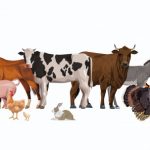Fun Facts About Monkeys

How much fun facts about Monkeys do you know? Here’s a test for you. Did you know that monkeys understand basic arithmetic, and in some rare cases, multiplications? Did you also know that they can count and understand written numbers? The facts about monkeys listed below will expose you to much more things you never knew about monkeys, facts about monkeys that’ll show even things monkeys can do you probably never knew they could.
Do you know how male capuchin monkeys attract female partners? Or the monkey with the longest tail? There’s so much more for you to know. Just read on.
Fun Facts About Monkeys
- About 55,000 primates are used for tests in the United States each year. In Great Britain, the number is about 10,000, while in Japan, the number of primates used runs into millions.
- The lesula monkey is the latest monkey discovered in 2007 in Africa, in the Democratic Republic of Congo.
- Monkeys live long, surviving anywhere from 10 to 50 years in the wild.
- The capuchin monkey’s hair resembles the 16th-century monks’ hooded robes, and so the monkeys were named after the monks.
- With a body that is only 2 feet long, the female spider monkey has a tail that is about 3 feet long. It has the longest tail amongst all the primates. The tail can carry the monkey’s whole body weight as well as pick up small items such as peanut.
- The pygmy marmoset is the smallest monkey on earth. Its body is as small as 5 inches, that is, 12 cm, with a tail of about 7 inches long, that is 17cm. They can fit into your palm, weighing the same as a pack of cards. It can leap 15 feet into the air which is about 36 times it’s own height.
- The male mandrill is the world’s largest monkey. It weighs around 77 pounds and is 3.3 feet long.
- The mandrill monkeys’ bottoms make it easier to see them in the leafy gloom of the wild because of their multi-colors. The monkeys also have fangs that are longer than the lion’s fangs.
- Though they are all primates, the scientific classification of monkeys does not include chimpanzees, gibbons, apes, and lemurs.
- Male Capuchin monkeys urinate in their hands and rub it into their fur thoroughly, to attract female partners.
- In Malaysia and China, cooked and raw brains of dead monkeys are widely consumed.
- Female monkeys teach their young ones how to floss their teeth.
- Monkeypox, tuberculosis, simian immunodeficiency virus, yellow fever, B virus, and Ebola Reston are diseases that are capable of spreading from monkeys to humans.
- Monkey tails have a patch of bare skin that is sensitive to touch, with tiny ridges that give their tails better grips. This patch of skin acts like the man’s fingertips.
- New world monkeys are monkeys that live in the south and central America while the old world monkeys are those that live in Asia and Africa.
- The patas monkey is the fastest primate in the world. It is capable of reaching speeds of 34 miles per hour.
- You can find Monkeys virtually everywhere in the world except Antarctica and Australia.
- One of the most unusual-looking and rarest of the new world monkeys is the uakari. It has a pink face that turns bright red most times when the monkey is angry or excited. Also, the noise it makes is similar to human laughter.
- The only Nocturnal New World monkey is the owl monkey, also known as the night monkey. The owl monkey is also one of the few species of monkeys affected by malaria.
- Monkeys are different from apes in many ways though they are related. Monkeys are not as intelligent as apes are, monkeys have snouts and tails, and they are also found in Europe, North and South America, while apes are not.
- In Europe, the tailless Barbary macaque is the only wild monkey. It is found in the British territory of Gibraltar and parts of Northern Africa.
Do you know these animal trivia questions as well as the complete animal group name lists.
- The chacma baboons live in the Namib Desert in Africa. A hardy chacma baboon once lived for 116 days in the desert, surviving by eating figs and without water.
- The ninth animal in the Chinese zodiac is the monkey. Those given birth to in the year of the monkey are believed to be intelligent, creative, and lively; however, they may be impatient and selfish.
- The stripe on the forehead of the Diana monkey looks like Diana bow, so the monkey was named for the Roman hunting goddess.
- The monkey with the loudest call amongst other primates is the male howler monkey. It is also one of the loudest animals on earth. An interesting fact about the male howler monkey is that the louder it is, the lower its sperm count and the smaller its testicles.
- Baboons have something that can pass for a language consisting of more than 30 sounds. Actions like lip-smacking and shrugging are part of the ways they communicate too.
- The largest troops of monkeys in the world are formed by Ethiopian geladas, consisting of 350 to 650 individuals.
- Monkeys also communicate, strengthen friendship and family bonds, and form hierarchies by picking out dirt and parasites from each other’s fur.
- A single group of monkeys can be referred to as a tribe, troop, cartload, carload, or barrel.
- Squirrel monkeys smear food on their tails for easy identification, just like name tags in the case of humans.
- White-faced capuchin monkeys use giant African millipedes as a form of insect repellant by rubbing their fur with it.
- The Burmese sneezing monkey, which was discovered recently sneezes every time it rains.
- Gorilla gorilla gorilla is the scientific name for gorillas.
- When rhesus monkeys learned to identify themselves in a mirror after being trained for weeks, the first check they ran was on their genitals, every nook and cranny was promptly examined.
- Monkeys share food and grooming with deer on the Yakushima Island in Japan, in exchange for rides.
The above are some of the surprising unknown facts about monkeys most people do not know, let’s look at some of the most popular questions asked about monkey facts;
FAQ About Monkeys
What is special about a monkey?
Monkeys are one of the most intelligent animals this is as a result of their large brains(compared to their body size), they also have very unique finger prints just like humans, they can also count and understand written numbers.
What do monkeys look like facts?
Monkeys have furs all over their bodies, though mostly black or browns the furs can be of many different colors. The pygmy marmoset is the smallest monkey in the whole world, and it is only 4-6 inches tall and weighs less than half a pound. Almost all monkeys have tails, and this is how you can tell they are monkeys and not apes. Apes do not have tails!
What do monkeys do everyday?
Just like every other animal, monkeys carry out their daily activities which usually includes looking for food, taking care of their young ones and teaching them how to survive. They are also involve in looking after each other especially when there’s a threat, they alert the entire troop.
How many monkeys are in the world?
There isn’t an exact number of all the monkeys in the world but there are about 260 known species of monkeys in the world.
What are 3 interesting facts about monkeys?
These are 3 interesting facts about monkeys you’d like to knw;
- The smallest monkey is only 4-6 inches tall and it is called the Pygmy marmoset monkey.
- A group of monkey is called a troop or barrel.
- A pygmy monkey(the smallest monkey) can leap 15 feet into the air.
Why do monkeys throw poop?
Monkeys throw poop and other projectiles they can lay their hands on when they experience stress and agitation. This mostly happens when they’re taken out of the wild.
How do monkeys sleep at night?
Monkeys sleep sitting in the trees, balancing on a branch, often upright, resting upon their bottom.
What is the biggest monkey in the world?
Mandrills monkeys are the biggest monkeys in the world.
What is the smallest monkey in the world?
The smallest monkey in the world is the Pygmy marmoset monkey and it is only 4-6 inches tall weighing just less than half a pound.
What are monkey’s favorite food?
The favorite monkey foods we know are nuts, fruits, seeds and flowers. Some monkeys are known to also eat meat in the form of bird’s eggs, small lizards, insects and spiders.
Do monkeys eat the whole banana?
Monkeys in the wild do not east bananas, though bananas are not poisonous to them, they primarily eat fruits, seeds, nut and flowers.



